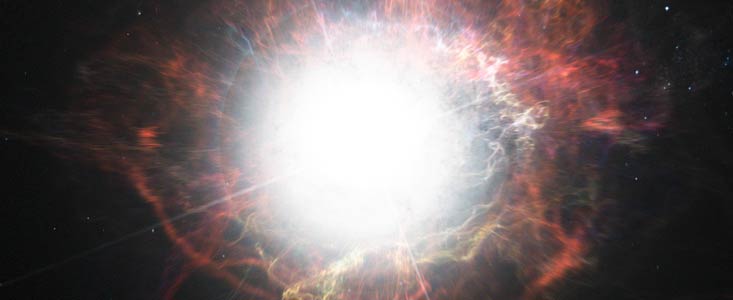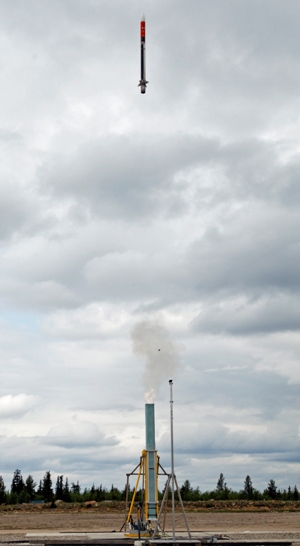
Artist's impression of dust formation around a supernova explosion. An ESO image
PARIS (BNS): The formation of stardust or cosmic dust in the galaxies has remained a mystery since long. Consisting of silicate and amorphous carbon grains -- minerals also abundantly found on Earth -- stardust gets its origin in the aftermath of a supernova explosion.
While astronomers know that supernovae may be the primary source of stardust, especially in the early Universe, yet it is still unclear how and where these dust grains condense and grow. It is also not known how they avoid destruction in the harsh environment of a star-forming galaxy.
Using ESO's Very Large Telescope (VLT) at the Paranal Observatory in northern Chile, a team of astronomers has been able to follow stardust being made in "real time". The researchers for the first time show that the cosmic dust factories make their grains in a two-stage process, starting soon after the explosion, and even continuing for years afterwards.
Tracking a Type IIn-class supernova -- one that has formed after the violent explosion of a massive star with at least eight times the mass of the Sun -- in the small galaxy UGC 5189A, the astronomers have found that dust formation starts soon after the explosion and continues for over a long time period.
The usually bright supernova, SN2010jl, was tracked nine times in the months following the explosion, and for a tenth time 2.5 years after the explosion, at both visible and near-infrared wavelengths.
"By combining the data from the nine early sets of observations we were able to make the first direct measurements of how the dust around a supernova absorbs the different colours of light," said lead author Christa Gall from Aarhus University, Denmark. "This allowed us to find out more about the dust than had been possible before."
The new measurements also revealed how big the dust grains are and what they are made of.
The dust grains larger than one thousandth of a millimetre in diameter formed rapidly in the dense material surrounding the star. Although still tiny by human standards, this is large for a grain of cosmic dust and the surprisingly large size makes them resistant to destructive processes, the researchers found.
"Our detection of large grains soon after the supernova explosion means that there must be a fast and efficient way to create them," said co-author Jens Hjorth from the Niels Bohr Institute of the University of Copenhagen, Denmark, and continued: "We really don't know exactly how this happens."
But the astronomers think they know where the new dust must have formed: in material that the star shed out into space even before it exploded.
As the supernova's shockwave expanded outwards, it created a cool, dense shell of gas -- just the sort of environment where dust grains could seed and grow.
Results from the observations indicate that in a second stage -- after several hundred days -- an accelerated dust formation process occurs involving ejected material from the supernova.
If the dust production in SN2010jl continues to follow the observed trend, by 25 years after the supernova, the total mass of dust will be about half the mass of the Sun.
"Previously astronomers have seen plenty of dust in supernova remnants left over after the explosions. But they also only found evidence for small amounts of dust actually being created in the supernova explosions.
"These remarkable new observations explain how this apparent contradiction can be resolved," said Christa Gall.
 Previous Article
Previous Article Next Article
Next Article













The Indian Air Force, in its flight trials evaluation report submitted before the Defence Ministry l..
view articleAn insight into the Medium Multi-Role Combat Aircraft competition...
view articleSky enthusiasts can now spot the International Space Station (ISS) commanded by Indian-American astr..
view article